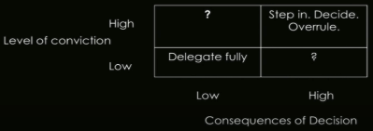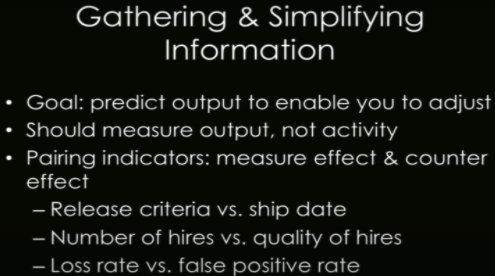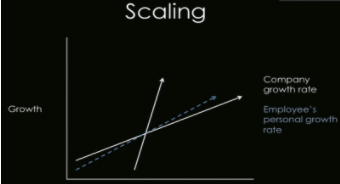Samuel is an Indonesian economics graduate from National Taiwan University, fluent in Chinese, Japanese and Indonesian. He previously worked for Taiwanese financial institutions, and has experience in financial institution corporate strategy and corporate banking.
Entrepreneurship is not an easy thing to do, building a business from the ground up is really hard. As a startup, you will have limited resources compared to mature corporates who can put in financial and strategic resources to achieve something.
If you decide to fundraise from VCs, the capital you raise can solve financial limitations that you face when scaling up the business. However, the higher cost of capital means you need to use the money quickly to scale up, for example by hiring new employees to strengthen your technical or sales capabilities.
As headcount increases, first-time founders find that it will be increasingly difficult to micromanage every single thing that happens, and the organization will eventually break. Hiroshi Mikitani, the founder of Rakuten, said that “everything changes at roughly every 3rd and 10th steps”. Sam Altman also talked about the need to change your management style as you start to hit 20 employees. But how do you really start changing from a micromanager into the company’s resource manager?
In this blog, we summarized Keith Rabois’ class at Stanford, where he shares his thoughts on how to put scaling up into practice:
- Build an organization with clear systems “that idiots could run”
- Transition from “contributor” to “manager”
- Measure people on output, not input
- Do calendar audit to see how much time you spend on actually managing
- Prioritize problems and focus:
- Simplify goals
- Clarify ambiguity
- Allocate resources
- Ensure consistent voice in organization
- Learn how and when to delegate
- Learn how to find “barrels” and do everything to retain them
- Keep expanding employee’s responsibility until they break
- Employee growth slope must be higher than company’s growth slope
- Learn how to scale your decision-making process across company
- Company-wide dashboard
- Transparency
- Metrics
The rest of the details are time stamped below for convenience:
Building a company is like building an engine
- You start with a blueprint, but it’s super hard to build it into reality
- Your goal is to build a high performance machine that you don’t need to worry about every hour:
- “Build a company that idiots could run, because eventually they will.”
What’s a leader’s role?
- Andy Grove’s High Output Management:
- Output of manager = output of his organization + neighboring organizations under his influence
- E.g. for VP of engineering, responsible for performance of product/engineering… + marketing, because product would influence marketing
- This is how you measure people. Focus on output not input. Measure progress.
- Output of manager = output of his organization + neighboring organizations under his influence
Starting a company should be messy.
- If you have too much process & predictability, you’re not innovating fast enough.
- It should feel like new problems come up every day, and you need to do triaging (急診分流).
- Some problems are just colds (not urgent), and some are potentially fatal (very urgent)
How do you decide what problems to prioritize?
- A leader’s job is to be an editor. Editors take out red pen & cross drafts out to make it simpler. Your goal is to use less red ink as time goes. What editors do:
- 1) Simplify
- Leader’s most important task is to clarify and simplify for everybody on your team
- Simplify to only a few things, use a framework that they can repeat
- Cross out & eliminate noise
- The more you simplify, the better people will perform. People can’t keep track of complicated initiatives
- “Too complicated” is not an excuse. Force yourself to simplify everything you do
- Leader’s most important task is to clarify and simplify for everybody on your team
- 2) Clarify
- Ask questions to clear ambiguity – whether simple or fundamental questions
- Try to narrow questions down to only a few fundamental matters for the company and only focus on those things.
- Become more decisive and not be distracted by all the small details
- This is something you have to practice, but you can drastically improve your performance if you keep this habit
- 3) Allocate Resources
- A head editor of a media company can allocate resources top-bottom or bottom-up, e.g.:
- Top-bottom: move editors to do more coverage on sports to compete with other sports news outlets… or focus on other topics later
- Bottom-up: journalists who work under come up with initiatives to propose to editors
- A head editor of a media company can allocate resources top-bottom or bottom-up, e.g.:
- 4) Ensure Consistent Voice
- The Economist feels like it’s written by 1 single person. Ideally, companies should have a consistent voice in any aspect.
- Objective: every piece of organization should have a consistent voice.
- Early on, it’s OK for founders to ensure everything
- But over time, you have to train people to understand the voice of the company and fix inconsistencies.
- Example: recruiting page vs. sales page vs. customer support page
- If you bring in executives from other scaled companies, they bring some of their culture with them, so you need to sort it out
- E.g. Google VP Engineering with Apple VP Design
- If you bring in executives from other scaled companies, they bring some of their culture with them, so you need to sort it out
- Example: recruiting page vs. sales page vs. customer support page
- Can never be 100% consistent, but be as close as you can
- Do 1on1s every 1-2 weeks.
- Agenda should be crafted by employee, ideally circulated to you beforehand
- You could push out to once a month for overperformers
- Do 1on1s every 1-2 weeks.
- 5) Delegate
- Editors don’t and shouldn’t write most of the content in the company. Writers do. Similarly, CEOs also need to delegate like editors delegate work to writers.
- Problem with delegating: you’re still responsible for everything as CEO, you can’t abdicate responsibilities
- How to delegate, but not abdicate?

- Task-Relevant Maturity: has this person ever done this before?
- If high (they’ve done it a lot), give them more flexibility
- If low (they’ve never done it), give them instructions and constantly monitor
- CEO management style should be dictated by the employees
-
- When managing a person who scores high, you can delegate a lot
- When managing a person who scores low, you can micro-manage more
- How do you make decisions when to delegate?

- Low consequences + low level of conviction: Delegate
-
- Let people make mistakes and learn
- High consequences + high level of conviction: Do it yourself
- Explain the why of your decisions
- Don’t do it too often and track the times when you do:
- You burn social capital on colleagues if you do it
- Real example: “Inner Squares” marketing proposal at Square
- First marketing hire Kyle proposed a referral program
- Through years of experience, Keith thinks it won’t significantly work, but since the consequences are low, he lets Kyle go ahead
- The results weren’t significant, but the “mistake” is worth it:
- Kyle learned how to filter future ideas
- Let Kyle be excited about his job
- [Writer’s note: Coral Capital’s take:]
-
How to maximize probability of success in hiring and promoting (“Editing the Team”)
- People expect when you hire more people, you will be more productive. But the reality can be a lot different. Why?
- Concept of “Barrels & Ammunition”
- Your company needs barrels to speed up, but most people are ammunition. Find barrels, and stock them with ammunition
- Barrels are difficult to find, also because they’re culturally specific: a barrel in company A might not be a barrel in company B.
- If you find barrels, do everything you can to retain them – they’re irreplaceable
- Barrels can take an idea from inception, find people to achieve and realize the idea
- How to find barrels?
- Start with giving a small responsibility
- Real example: delivering fresh smoothies for Square engineers at 9pm
- Office manager and assistant already tried to complete the task, but they failed. New intern on 2nd day volunteered and succeeded → This intern might be a potential barrel.
- Real example: delivering fresh smoothies for Square engineers at 9pm
- Keep expanding scope of employees’ responsibilities until they break
- They will break. Once they break, that’s the role they should stay in
- Another barrel sign: If you notice employees going to an individual’s desk who aren’t their direct manager, that means they believe that the individual can help them
- → a sign to give this individual more opportunities and promotions, he/she might be a barrel.
- Start with giving a small responsibility
- When do you hire externally, promote internally, or replace somebody?
- When is it acceptable to compromise and hire more ammunition instead of barrels?
- In principle, ammunition will be more compared to barrels. The key is the ratio of barrel to ammunition, usually around 1:20
- Natural tendency for managers is to increase headcount of team (like building an empire), but if you grade their performance review based on x ÷ y, where:
- x = their output / successes, y = number of people on their team
- y will somehow stop increasing
How to aim your barrels?
- “Insist on Focus”
- Peter Thiel forces every employee to focus on one problem only. Why?
- Most people would solve problems that they understand how to solve:
- They solve B+ grade problems instead of A+ grade problems:
- A+ grade problems are too difficult to solve on their own, so people would solve B+ grade problems instead
- When a company only solves B+ problems, it never creates breakthrough ideas because no one focuses on solving A+ grade problems
- They solve B+ grade problems instead of A+ grade problems:
- You can be less strict and have people focus on 2-3 things instead of just 1
How to scale and leverage your decision-making process to the whole company?
- You can’t make every decision in the company, you need people to make decisions as good as your decision
- 1) Dashboard
- Founders should create tools to enable people to decide… e.g. a dashboard:
- Simplify and define company’s metrics for success
- How to measure if a dashboard is successful:
- How many % of employees use dashboard everyday, if dashboard is useful, usage should be almost 100%
- Dashboards should be very intuitive for whole company
- How many % of employees use dashboard everyday, if dashboard is useful, usage should be almost 100%
- Founders should create tools to enable people to decide… e.g. a dashboard:
- 2) Transparency
- Let employees not feel excluded
- Some techniques to achieve “minimum viable transparency”:
- i) Everybody in company should have access to key metrics
- ii) Review board meeting decks with company, and share board feedback
- iii) Create notes for every meeting and send to whole company
- As company scales, people can still monitor what is going on
- iv) have conference rooms with glass walls so people know who is meeting with whom
- 3) Metrics

- Measure outputs not inputs
- Importance of pairing metrics / indicators:
- If you only measure one thing, company will optimize for the metric, but it might have harmful side-effects
- E.g. risk in payments & fintech:
- If the risk team set a KPI for lower fraud rate, they might treat everyone as a fraud case
- They can have the lowest fraud rate in the world but also the worst customer satisfaction score
- When you measure fraud rate, pair it with false positive rate → forces team to innovate
- Another example: recruiting KPI
- You can have recruiter bring a lot of candidates for interviews, but you need to track for quality of hires
- You should measure people based on both indicators
- Look for anomalies in metrics, not expected behavior
- E.g. PayPal:
- Someone noticed eBay power sellers manually write “pay me with PayPal” in listings. Originally eBay wasn’t a market for PayPal.
- PayPal succeeded when they decided to focus on this market, leading to eBay automatically giving the option to automatically insert a “Pay with PayPal” button
- E.g. LinkedIn:
- 25% of all clicks from homepage is people clicking their own profile
- Max Levchin (founder of Affirm) thought that this is due to vanity (users being proud of own achievements/career)
- This user insight is confirmed after research, but this wouldn’t be known if someone didn’t look into anomalous data
- E.g. PayPal:
- 1) Dashboard
Details matter
- Bill Walsh’s book “The Score Takes Care of Itself”, Bill turned around the worst team in football
- If you get all the details right, you don’t need to worry about the results. The results are a byproduct of getting the details excellently.
- First thing Bill did: write a 3-page memo to teach the receptionist how to answer the phone properly
- If the organization does everything the right way, they will also execute things that matter the right way
- How to apply it to your company:
- Do it on details that may not matter, or matter superficially
- E.g. Steve Jobs demands detailed Mac circuit board designs, even if users can’t open the Mac
- Leaders should focus on details that can be a distraction to productivity, and give employees the best tools to achieve
- E.g. office space & environment, laptops, snacks
- Do it on details that may not matter, or matter superficially
- How do you harmonize need for details and need for delegation?
- Underlying philosophy of getting details right is to install it early on
- Employees will start to value details, and it will scale along with people you bring:
- Each team leader will start to enforce the culture
- People who don’t fit the culture wouldn’t get hired
- The key to culture is it’s a rule & framework to make decisions
- Once culture is installed, you can just watch things happen
- Each team leader will start to enforce the culture
- Employees will start to value details, and it will scale along with people you bring:
- Underlying philosophy of getting details right is to install it early on
Other questions:
- How do you transition from a contributor to a manager:
- Get time allocation right, do a calendar audit:
- Track for a month what you spend your time on to see how much your time is spent on managing vs doing
- “Always be recruiting”, but how do you balance that?
- Depends on your priorities. If it’s your #1 priority, 25% of your time is reasonable
- One trick to do:
- CEOs to list priorities, then do calendar audits for CEOs
- If #1 priority is recruiting or fundraising, match your time allocation with your priorities



